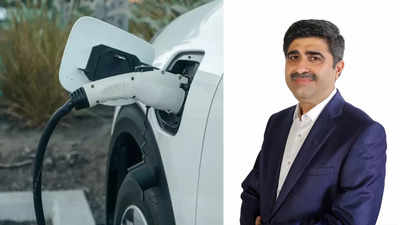This article is authored by Jyoti Malhotra, Managing Director, Volvo Car India. In a world long dominated by ICE Engines, EVs have been steadily advancing over the years, awaiting their moment to shine. The transition took time, the breakthrough finally came in 2020, with the introduction of World EV Day.
Started by sustainability-focused companies Green.TV and ABB, World EV Day was established to raise awareness about the role of electric vehicles in shaping a future which is sustainable clean and responsible. Since then, EVs have been gaining traction, with each year marking significant progress and increased visibility in the global automotive sector.

Today we are in the 5th year of World EV Day which serves as a global platform for promoting electric mobility and accelerating the shift towards cleaner transportation. It emphasizes the importance of reducing carbon footprint, innovation in battery technology, and building the infrastructure required for widespread EV adoption. The day also encourages both individuals and industries to commit to a more sustainable future by embracing electric vehicles.
What began as an awareness campaign has quickly evolved into a global movement, reflecting the growing momentum of EVs as a central part of the automotive landscape. By shining a spotlight on the benefits of electric mobility, World EV Day celebrated on 9th September every year, aims to accelerate the transition from fossil fuels to electric power, contributing to global climate goals and a greener tomorrow. Volvo C40 Recharge First Drive Review: Desirable but practical? | TOI Auto On World EV Day, it's clear that the electric vehicle (EV) segment in India is experiencing rapid growth.
Between January 1 and June 30, 2024, retail demand for electric passenger vehicles has shown a robust double-digit growth rate, with the number of EVs reaching 55% of the total for calendar year 2023, which was 73,267 units. In the luxury segment , carmakers have also made significant progress, with 1,274 units sold between January and June 2024, marking a 28% year-over-year increase from 997 units in the first half of 2023. This advancement has secured a 3.
13% share of the Indian EV market for luxury vehicles in the first half of this year. Looking ahead, the Indian luxury e-mobility market appears promising, supported by an anticipated rise in the Indian GDP to 7% over the coming years. Despite the positive growth and promising numbers, the EV market is still navigating through several challenges.
Range anxiety , which refers to the concern about an EV's driving range on a single charge, remains a significant barrier for many customers. Additionally, the current infrastructure for charging stations is still in its nascent stages, impacting the convenience and accessibility of EV ownership. However, the future of electric mobility is bright.
One of the most encouraging developments is the increasing integration of renewable energy sources into the EV charging infrastructure . This shift is pivotal in enhancing the sustainability of electric vehicles. Moreover, advancements in EV technology have led to significant improvements in vehicle range.
Today, many electric cars offer ranges exceeding 500 km on a single charge. For electric vehicles to succeed in India, it is crucial to develop a comprehensive ecosystem. This approach involves not only increasing the availability of EVs but also establishing a widespread network of charging infrastructure to make EVs more accessible to the general public.
Apart from charging infrastructure large scale adoption of EV4 wheelers is slow due to expectation of reduction in costs particularly of battery packs. In the luxury segment costs matter less than in the budget segment but the number of EV4 wheelers on road depends on the budget segment cars. Once such market picks up EV Car sales will jump sharply.
The market is waiting for the right trigger which in turn is a combination of factors meeting consumer expectations. Disclaimer: Views and opinions expressed in this article are solely those of the original author and do not represent any of The Times Group or its employees..



















